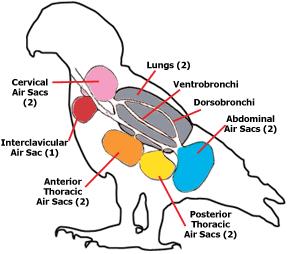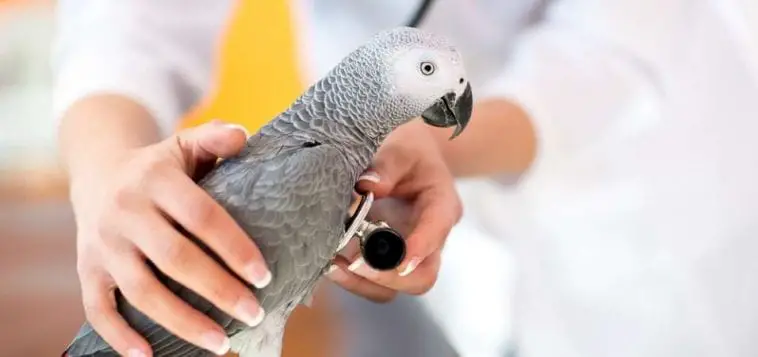Many people want to own a parrot. It is for several reasons. It’s beauty, for entertainment, or as a companion. It doesn’t matter what reasons you have. Parrots are one of the most in-demand pets all over the world.
Despite the charisma of this bird, you should not dive in shallow waters. Parrots are delicate creatures that need care, attention, and understanding. Before you find the perfect pet, you need to have an understanding of these birds.
If you think taking care of them is simple, you are in for a surprise. You may have the perception of getting a parrot, keeping it in a cage, and then feed it. Things are not that simple. If you are interested in these birds, keep on reading. Let’s have a deeper understanding of your favorite parrots.
Parrot Anatomy
Understanding a creature as delicate as a parrot, you need to start from the basics. Where do you think is the best way to start? Of course, it is with the anatomical structure of this bird.
A parrot’s anatomical structure is divided into 2 categories. These are what you can see from the outside and what works from the inside. Check out the different features that will help you understand how these birds take care of things.
Internal
The word is self-explanatory. The internal part of the birds’ anatomy is the things inside their bodies. The internal structure of a bird is divided into 5 parts. You need to learn the purpose of these 5 parts to better understand what is going on inside their bodies.
Respiratory System

Oxygen is a vital need for parrots and any other creatures. To fly, their body needs energy. Without oxygen, it will be hard for them to do such a task. The respiratory system is in charge of bringing oxygen in the bloodstream.
Birds have a better respiratory system than mammals. It means they get more oxygen per breath. There is one danger, though. Oxygen is not the only thing that goes through their respiratory system quickly. Birds are known to acquire airborne toxins faster than any other mammals.
Nervous System
The nervous system of a parrot is the same as other vertebrates. It is composed of 3 vital parts.
- Brain
- Spinal Cord
- Nerves
These three have distinct functions that help birds with their daily activities. It coordinates, provide, and store information to the birds. Parrots are known to have large brains, which are not a surprise given their intelligence.
Digestive System
A bird’s digestive system is remarkable. It has some features that help parrots to digest their food quickly. Although birds do not have teeth or saliva, their unique digestive system makes up for it. Parrots have a crop where the food they eat is stored temporarily. It will stay there until it is moist and ready to go.
Cardiovascular System
It is the internal part of a bird that is in charge of oxygen delivery. It consists of the heart and the others that connect it. Birds may appear small, but their heart is big and strong enough to take contraction in rapid succession.
While parrots are at rest, their heart is beating around 200 times within a minute. Imagine how much more it can do while flying. You can expect that it will be at least 800 beats per minute.
Musculoskeletal System
The skeletal system of birds has a lot of bones. If you are wondering how are they able to fly with all those bones, here is the answer. Most bones are lightweight. These are called hollow bones.
Though the bones on their body may appear rigid, they will surprise you with their neck. Because parrots have 10 neck vertebrae, they are capable of turning their neck on a 180 degrees angle.
External
It is what comprises the outer part of a bird’s body. Let’s check the different parts of their external features and see the purpose it serves.
Eyes
There is a reason why there is a saying that some people have a bird’s eye. It’s because no animal has better eyesight than birds. Their eyes are an integral part of their survival in the wild.
Think of a sniper trying to make a long-range shot. This is how birds work. They are capable of seeing things at a long distance with high accuracy. It is a useful tool when they are hunting for food and avoiding predators.
Ears
In birds, you will not see the usual ears like any other animal. What they have is called ear holes. You will not be able to see this instantly unless you take a second look. It’s because the holes are protected by auricular feathers.
They have a good sense of hearing. Parrots work well together. If there is danger in the area, they make some noise that their friends can hear as a warning.
Cere
You can find the cere on top of the birds’ beak. The full function of cere is still vague. But it is known to possibly help birds with their sense of smell and breathing.
Skin
The parrots’ skin is sensitive. Your bird can determine any increase in temperature, pain, and pressure. The majority of its skin is covered with feathers. They need to rely on respiration, though, if they want to cool down. It’s because parrots have no sweat glands.
Feathers
Parrots are extremely popular, and one of the reasons is their feathers. It comes in different shades, but to look good is not the only purpose of it. The feathers are categorized into 3 types:
- Flight feathers – based on its name it is useful when they are flying. These are the long feathers that you can see on the wings and tails of a bird. It adds power when they fly from one place to another.
- Body feathers – this type acts as a protective coating for birds. It is designed to overlap each feather and give protection to our pets from sun, wind, and injuries.
- Down feathers – it is the most fluffy and soft among the 3 types. It acts as insulation so they can maintain the desired body temperature.
The wings of a parrot consist of different kinds of feathers. It is extremely important as they are needed to help the birds fly.
Beak and Tongue – a parrot’s beak is strong that it can crack open their food. It is made up of keratin, which is a similar component of our fingernails. They may not have teeth, but they make up for it by having a strong tongue. Using their tongue and beak, it is easy for parrots to devour and position food inside their mouths.
Tail – it is made up of tailbone covered in multiple layers of feathers. A bird’s tail is used to steer them into position when they are flying. Take a look at an airplane. It has wings and a tail that helps it to fly effectively.
Feet – parrots use their feet in so many ways. It has a strong grip, which is not surprising as it has 4 toes. 2 are pointed backward and the other 2 forward. A parrot’s feet give them the ability to get food, climb, and balance themselves when on a perch.
How to Keep your Parrots Healthy
Now that you know the physical aspect of a parrot, it’s time to focus on how you can keep them healthy. Here are some important tips that you can follow.
Cleaning Habit
Parrots exposed to bacteria and dirt can get diseases from it. It is best if you can make sure that the cage, especially the bottoms, are clean. The suggested cleaning frequency is every 2 days, but for your pet’s best interest, make it a habit of cleaning it daily.
Cleaning is not only limited to its cage. You also need to take care of its food tray, water dispenser, and droppings tray. Ensure that there will be no traces of droppings as this can be harmful to your birds.
Changing Habits
The food they eat and the water they drink should daily. The food can spoil, and it is not good for your pets. Water is extremely important. Birds are prone to dehydration. See to it that they have sufficient and clean water.
Vet Visit
Your parrots are delicate and vulnerable to illness. There are instances when you can notice symptoms if they are sick, but these birds are a master at hiding their pain. The best thing to do if you want to make sure that your pets are healthy is to have them checked by a veterinarian regularly.
Be Observant
Sudden changes in their appearance can be an indication of an ailment. If you notice anything out of the ordinary, have your bird checked immediately. It is not just with their physical attributes. If there are sudden changes in their mood and behavior, there is a big chance that they are sick.
Healthy Food
This is the most important factor in keeping your pet healthy. There should be a variation of fruits, vegetables, and seeds on their diet. Don’t just feed them with one kind of food. Though this is alright for some time, you are putting them at risk of getting sick.
Conclusion
After knowing all these things, you should know by now that parrots need time, attention, patience, and lots of understanding. If you are ready for the responsibility, go ahead and get your parrot now. Through all these tips, taking care of them should come naturally.


